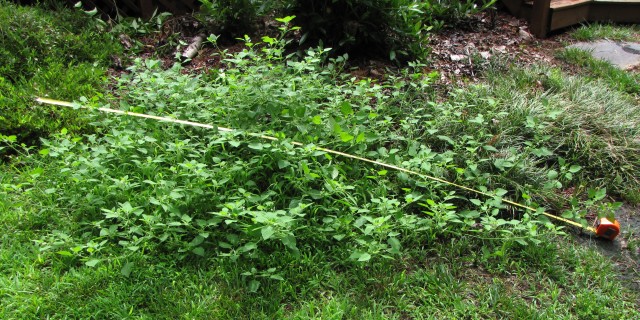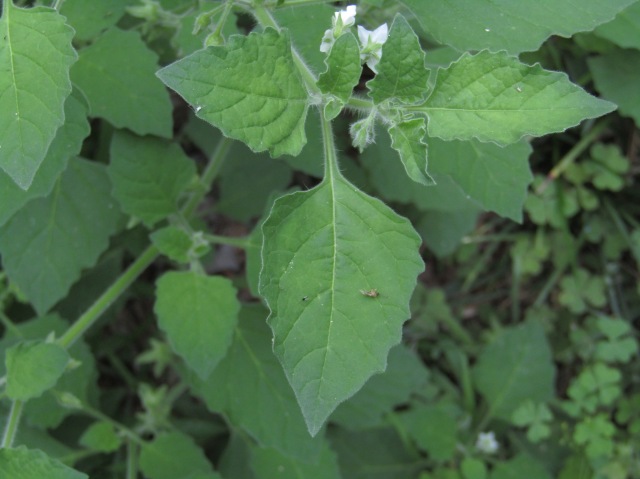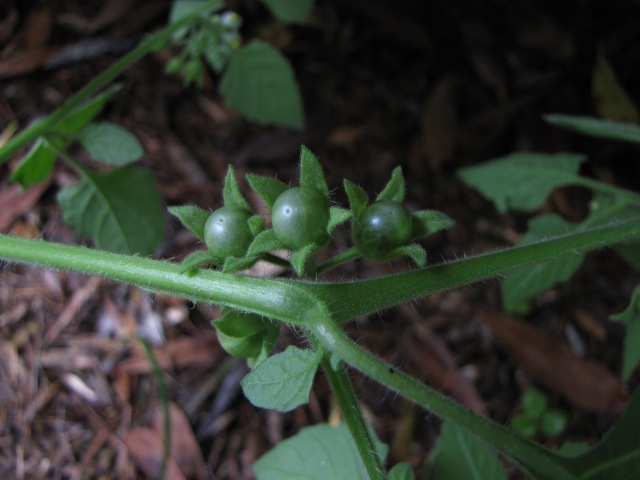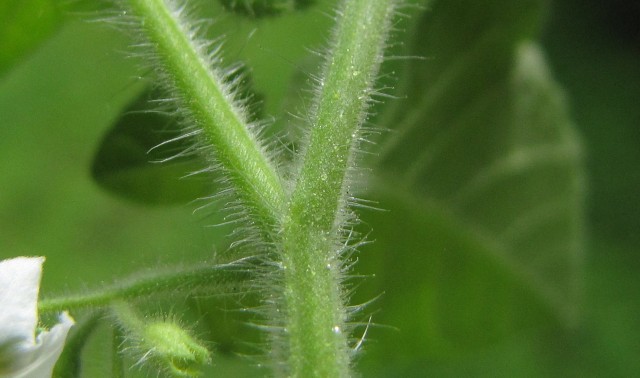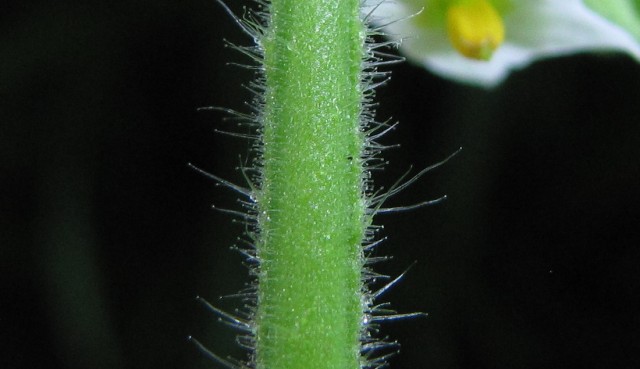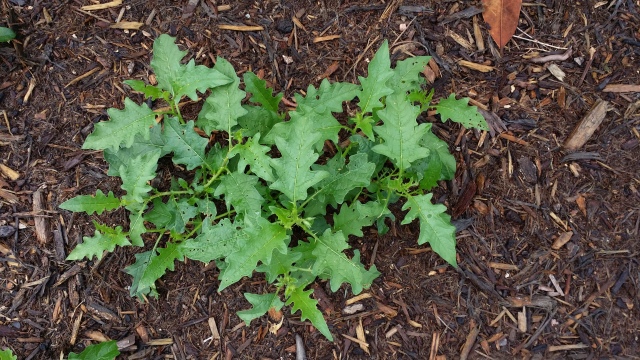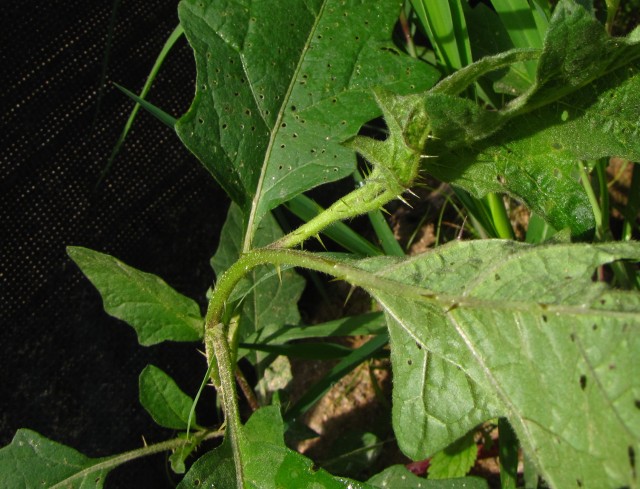The Hairy Nightshade (Solanum sarrachoides ) is an introduced species from South America which is uncommon to rare in North Carolina. It is listed as occurring in only five North Carolina counties. With this plant, scarcity is a good thing. Like many of its nightshade relatives (family Solanaceae), Hairy Nightshade is a serious agricultural pest of potato fields and is poisonous to livestock across its range. It was identified as the cause of death to a small group of Black and White Ruffed Lemurs at a zoo in California. Three of these lemurs were released into a brand new outdoor natural enclosure, that unfortunately also contained a group of Hairy Nightshade plants. Twelve days later, one lemur was dead and the others in critical condition. Eventually a second lemur died, but the third finally recovered.
Hairy Nightshades are summer annuals found in open areas, gardens, agricultural fields, and disturbed places. They are large, densely pubescent plants covered with sticky, glandular hairs and small, white flowers. The plant in the photographs below was found in a rural Wake County garden (bringing the county total to six). In the following photo, an eight foot metal tape is stretched across the plant. It measures eight feet in length, five feet in width, and 2 feet high – a huge plant.
The leaves and stems are soft and clammy to the touch. The leaves are ovate to nearly triangular in shape with small lobed margins. It is impossible to touch or handle the plant without getting a sticky residue on the hands.
The flowers are fairly typical for nightshades with 5 white petals that are fused at the base. A column of 5 stamens rise out of a green area at the base of the petals; the green style can be seen slightly protruding from the stamens.
The fruit is a rounded berry that usually remains green even when mature.
Dense glandular hairs are the most notable characteristic of Hairy Nightshades. Another common name for the plant is Viscid Nightshade. The glands appear to be stipitate glands, simply meaning that the glands occur at the end of stalks. The following photos are closer views of the glandular hairs. Note in the final two photos the globes of fluid visible at the ends of the stalks. It is believed that these glands evolved as a means of transporting toxic wastes out of the plant body, where they serve as an early line of defense against insect or mammalian predators.
Our commonest North Carolina nightshade is the ubiquitous Horse Nettle (Solanum carolinense), found in large numbers everywhere in North Carolina.
As the name implies, Horse Nettle has arrays of sharp, tough spines on the stems and middle leaf ridges.
The flowers are larger than most nightshades and color can range from white to a light or deep violet. The berries turn bright yellow in the fall and winter, and stand out against the bare winter landscape.
The basis for the toxicity of these two plants and other nightshades is a glycoalkaloid called solanine, which is found throughout the plant and berries. Toxicity varies tremendously depending on many factors, especially environmental and genetic. All are potentially dangerous when ingested. In general, the berries are more toxic when they are young and the foliage is more toxic when it is mature. The lemurs mentioned earlier in the article are vegetarians, but primarily fruit eaters. So it is likely that they ingested berries rather than leaves.
Herb Amyx

